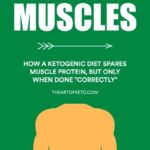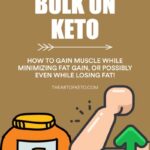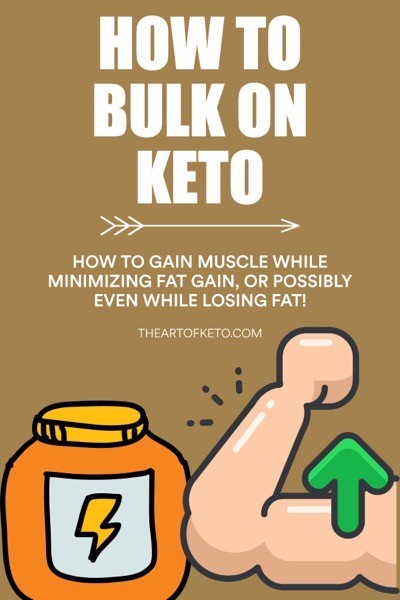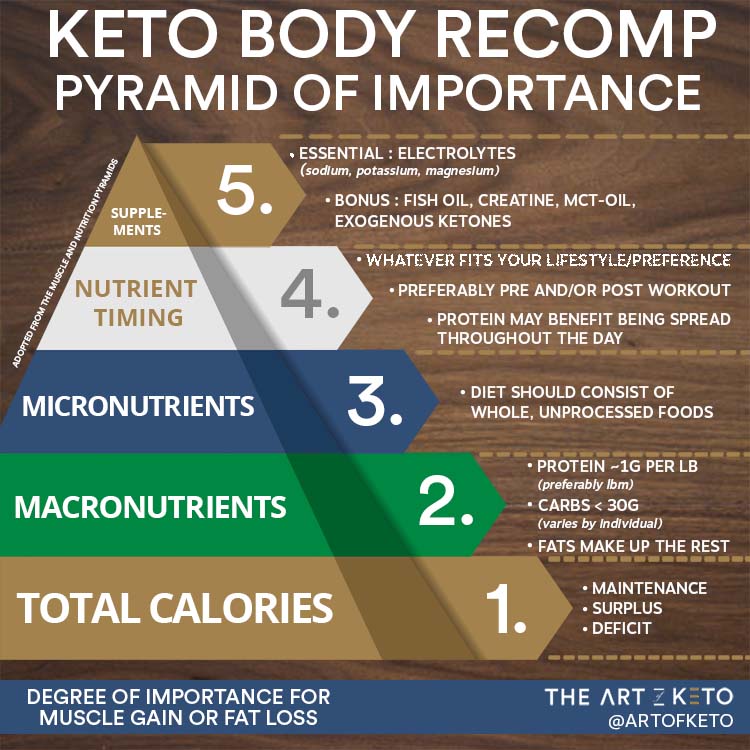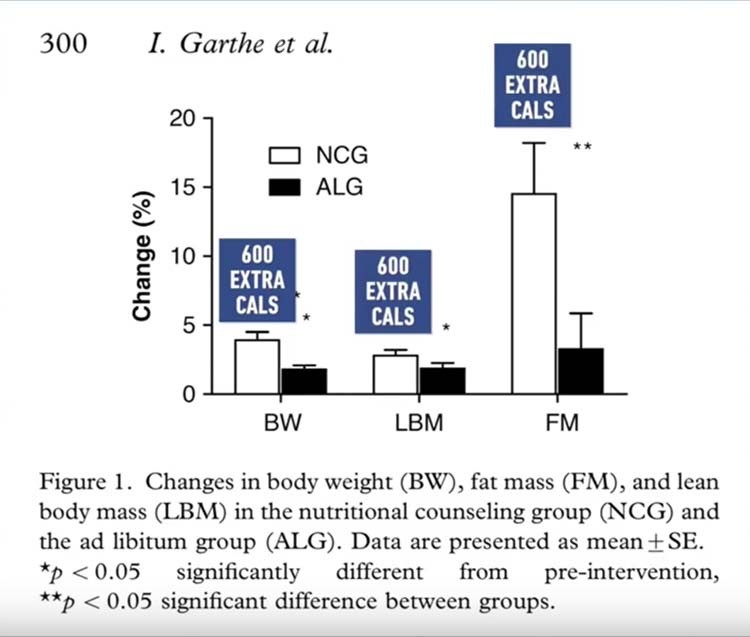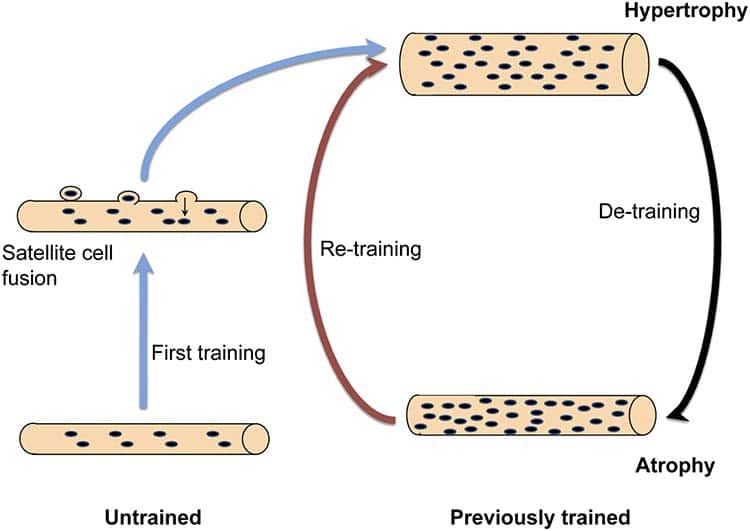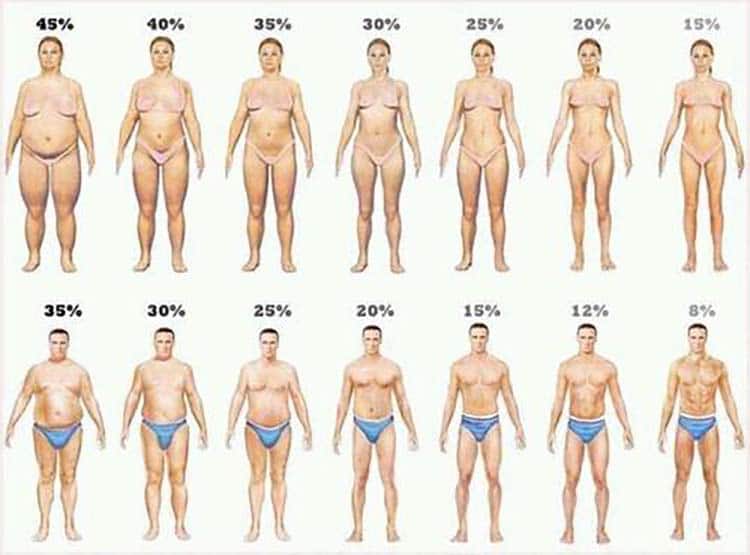I’ve heard horror stories on old message boards about how I’ll lose muscle when starting a ketogenic diet, that was nearly 17 years ago.
A keto diet helps to spare muscle through four main mechanisms, decreased glucose requirements, decreased nitrogen excretion, ketones effect on protein synthesis, and a slight decrease in thyroid levels. In essence, the brain and body will derive most of their energy from ketones and fatty acids.
The reality is that a ketogenic diet helps to spare muscle… when done correctly.
Whether you’re an active individual who lifts weights or just using keto to drop a few pounds, your ultimate goal should ALWAYS be to spare as much muscle as possible while dieting.
Additionally, research suggests that beta-hydroxybutyrate, one of the ketone bodies, may prevent inflammation-driven catabolic pathways. Additionally, ketones have also been shown to promote muscle protein synthesis.
1In this article, I’ll go over why you may be losing muscle on keto, the benefits and drawbacks of including intermittent fasting in the mix, how to keep that muscle-full look, and much more.
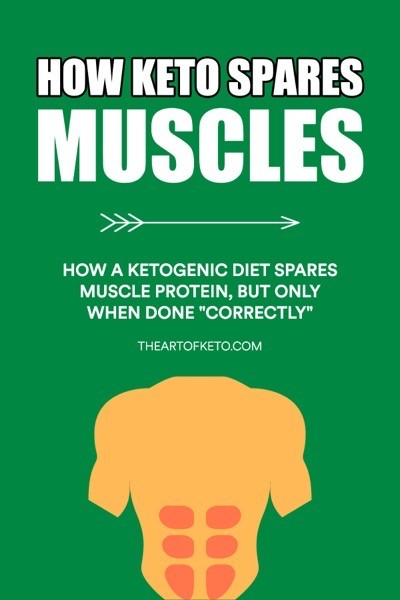
How Does Ketosis Spare Muscle?
Ketogenic diets have been gaining steam lately, but the research is still in its infancy, at least when it comes to muscle and performance.
The effects of ketosis and how it exerts a protein-sparing effect haven’t entirely been established, but these are mechanisms by which they may be sparing protein (muscle).
Decrease the body’s glucose requirements
When you follow a ketogenic diet, your body’s overall metabolism shifts from burning glucose as its primary fuel source to using fat and ketones, especially in the brain.
This shift in fuel utilization leads to less protein ending up converted to glucose, thus sparing protein. 2 3
You are also able to train at higher intensities with less reliance on glucose, thus allowing you to spare glucose even further, as shown in this study.
Decreased nitrogen excretion
As ketosis develops, the kidney increases its absorption of ketones. The reabsorption of ketones somehow acts as an adaptation to prevent further nitrogen losses.
This adaptation can spare as much as 42 grams of body protein per day, which is huge. 4
Affect protein synthesis and breakdown
People suggest that ketones are directly anti-catabolic, but further research has yet to examine this claim.
In terms of muscle protein breakdown, with the brain’s decreased glucose requirements, less protein breakdown occurs, as less protein is required to be converted via gluconeogenesis to fuel your brain.
There is also some suggestion that ketosis itself is protein sparing and may promote muscle protein synthesis.5 6 7 8
May affect thyroid levels
Somewhat contradictory to the above point, but ketogenic diets may help spare muscle through a decrease in the thyroid, more specifically the thyroid hormone T3.
With reduced levels of T3, protein synthesis is also decreased, and thus a lower requirement for the muscle to be catabolized.
Keto Diet And Muscle Loss… What Am I Losing Muscle On Keto?
There are a few reasons why you may be losing muscle while following a ketogenic diet, even though it’s touted as being muscle sparing.
Protein intake is low
Regardless of the role of a ketogenic diet in sparing muscle, protein intake should still be maintained. Protein is especially crucial during the first few weeks of a ketogenic diet.
When first starting a ketogenic diet, protein breakdown is at an all-time high.
Both the nervous system and the brain are still glucose hungry, thus creating the energy it needs (glucose) via gluconeogenesis from substrates, more specifically, amino acids.
Protein requirements eventually go down as the need for glucose will also eventually decrease after the first few weeks.
At the very minimum, regardless of body weight, I would suggest an intake of 150 grams of protein per day for the first few weeks. After that, an intake of between 0.8 grams and 1.2 grams per pound per day is sufficient.
Sedentary individuals will stay towards the lower end of 0.8, while more activity individuals will hover towards the higher end.

Losing too quickly
The body can only liberate and oxidize so much fat per day. The more fat you carry, the more weight you can generally lose without the risk of losing muscle.
How much weight should you lose? A rate of between 0.5 – 1.5% of body weight per week is an excellent general rule of thumb that should have you losing appropriately.
Individuals already on the lean side should be towards the slower rate, while those who have a lot of fat to lose may generally lose quicker without worrying.
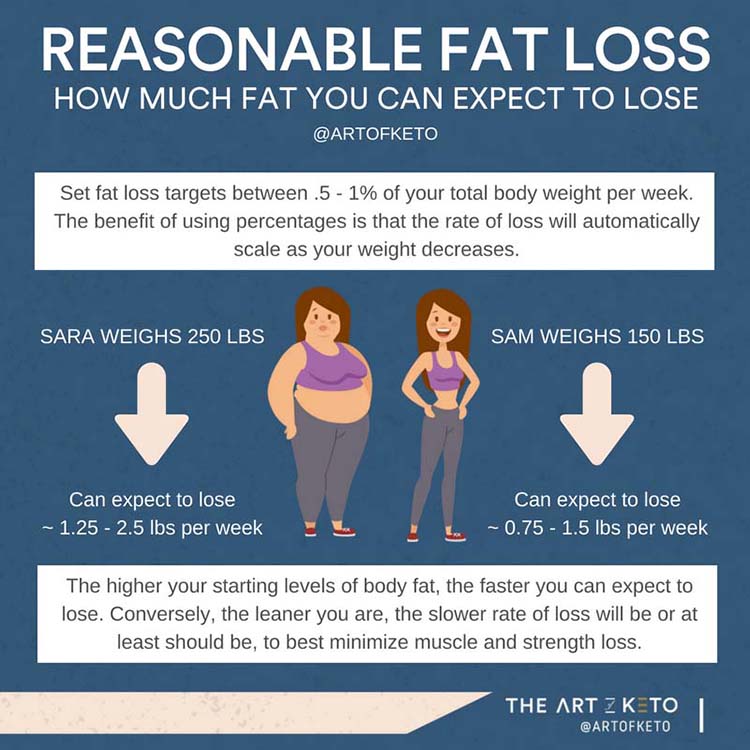
Not providing a stimulus
If you don’t provide your muscles with an adequate stimulus (resistance training), then why would it need to spare it?
The same routine that built the muscle will help you maintain it. For those who are new to exercise, almost ANY exercise will be a sufficient stimulus.
You may even gain muscle while losing fat at the same time if you’ve never lifted a weight before.
You’re just too lean
This usually applies to those who are already VERY LEAN.
At a certain point, it’s almost inevitable that you will lose some amount of muscle if you are far below your body’s set point.
Your body is doing everything it can to survive, and with limited fat storage, one of the ways it gets fuel is by digging into that hard-earned muscle.
Either accept some muscle loss is inevitable when you’re trying to get extremely shredded or stop at a body fat that isn’t sustainable that you’ll be happy with.
Sometimes you just have to sacrifice a little muscle if you want to push the boundaries, but you should be able to re-gain it much more quickly then it took to accrue in the first place after the diet.
Best Way To Gain Muscle On Keto
The same way you put on muscle, not on a ketogenic diet, is the same way you’ll gain muscle on a ketogenic diet, just without all the carbs.
The three most important factors are:
- Eat-in a surplus
- Eat sufficient protein
- Train progressively
There’s no need to do dirty bulks or go on an all you can eat “see” food diet. The rate at which we can put on muscle is quite slow, especially if you’ve been training for any considerable amount of time.
A 10-20% surplus above your maintenance caloric needs should be all you need. If you want to plug in your stats into the keto macro calculator, it can give you a calorie starting point and set your macros for you.
And of course, you must be progressing in the gym. The increase may be through increasing the weight, reps, number of sets, or a combination thereof.
If you want to know how to lose fat and gain muscle while following a ketogenic diet, check out my articles below:
Building Muscle On Keto And Intermittent Fasting
With the popularity of intermittent fasting, especially amongst the keto community, many are naturally wondering whether they can build muscle on a ketogenic diet with IF.
My answer is, while It can be done, it may not be the most optimal.
So you have to ask yourself if you’re after OPTIMAL or sustainable because I’m assuming that’s why you’re doing intermittent fasting.
If you want optimal results, drop the intermittent fasting, but if IF fits your lifestyle much better, then do that.
If sticking to a feeding window is more important for the marginal gains you would experience otherwise, then keep doing what you’re doing.
The reason being, our goal when trying to build muscle is to stimulate muscle protein synthesis (MPS) as much as possible.
The caveat is, between 20 and 40 grams of protein is sufficient for most people to adequately stimulate MPS, and any more protein won’t stimulate MPS any further.
Once stimulated, MPS undergoes a refractory period of between 120-180 minutes in which it cannot be stimulated again. If you’re restricting your eating window to a short period, you’re missing out on opportunities to stimulate muscle protein synthesis.
If OPTIMAL is your goal, you want to have at least 4-6 protein feeds throughout the day.
How Do You Keep Your Muscles Full On Keto
One of the drawbacks many experience when lifting weights on a ketogenic diet is the loss of that fullness.
Many people complain of not being able to get a pump on keto or not being vascular anymore, but a lot of that can be attributed to two things.
Staying hydrated
When starting a ketogenic diet, you naturally have less glycogen, and therefore, less water stored in your muscles.
This may be why you pee so much when first starting a ketogenic diet.
You’re expelling a lot of water.
One way to ensure your muscles stay full and round on keto is by making sure you stay adequately hydrated.
Consuming enough electrolytes
To go along with the first point, you must must must (yes, three musts) make sure you’re getting in an adequate amount of electrolytes, especially sodium and potassium.
Without enough sodium and potassium, not only will you not be able to hold any of the water, you won’t be able to get that pump you’re looking for.
That’s because increased sodium will drive fluid into your blood, which helps to pump up the muscles.
I like to take about ~2 grams of sodium 30 minutes before my workout, which equates to about one teaspoon of salt.
Creatine
Creatine is one of, if not thee, most studied supplements, proven to be effective for exercise performance.
On top of that, it’s dirt cheap.
Want to learn more about creatine? Check out my article below:
Cyclical or Targeted Ketogenic Diets
A method popularized by some bodybuilders is the strategic use of carbohydrates during a ketogenic diet.
A targeted ketogenic diet (TKD) has small amounts of carbohydrates placed immediately before and after workouts.
A cyclical ketogenic diet (CKD) utilizes periods of strict ketogenic dieting with a day or days of carb loading.
If you’re finding your performance suffering, but want to maintain a ketogenic lifestyle, it would be worth experimenting with.
How Do Muscles Use Ketones
There’s a misconception about the use of ketones by the muscles.
Muscles WILL derive upwards of 50% of their energy from ketones, but only during the first few days of ketosis.
Within a few weeks, muscles only get 4-6% of their energy from ketone bodies. 9
The rest of the energy comes from other fatty acids, and glucose if the intensity is high enough.
But you haven’t been eating glucose?
The glucose comes from glucose created via gluconeogenesis along with the glycerol backbone from the triglycerides (fat) that you consume.
The Takeaway
Ketosis spares muscle protein via different mechanisms, though further research is still required.
The possible mechanisms behind keto’s protein-sparing effect include the drop in thyroid, ketones direct impact on protein synthesis, decreased excretion of ketones, and a reduced requirement for glucose.
